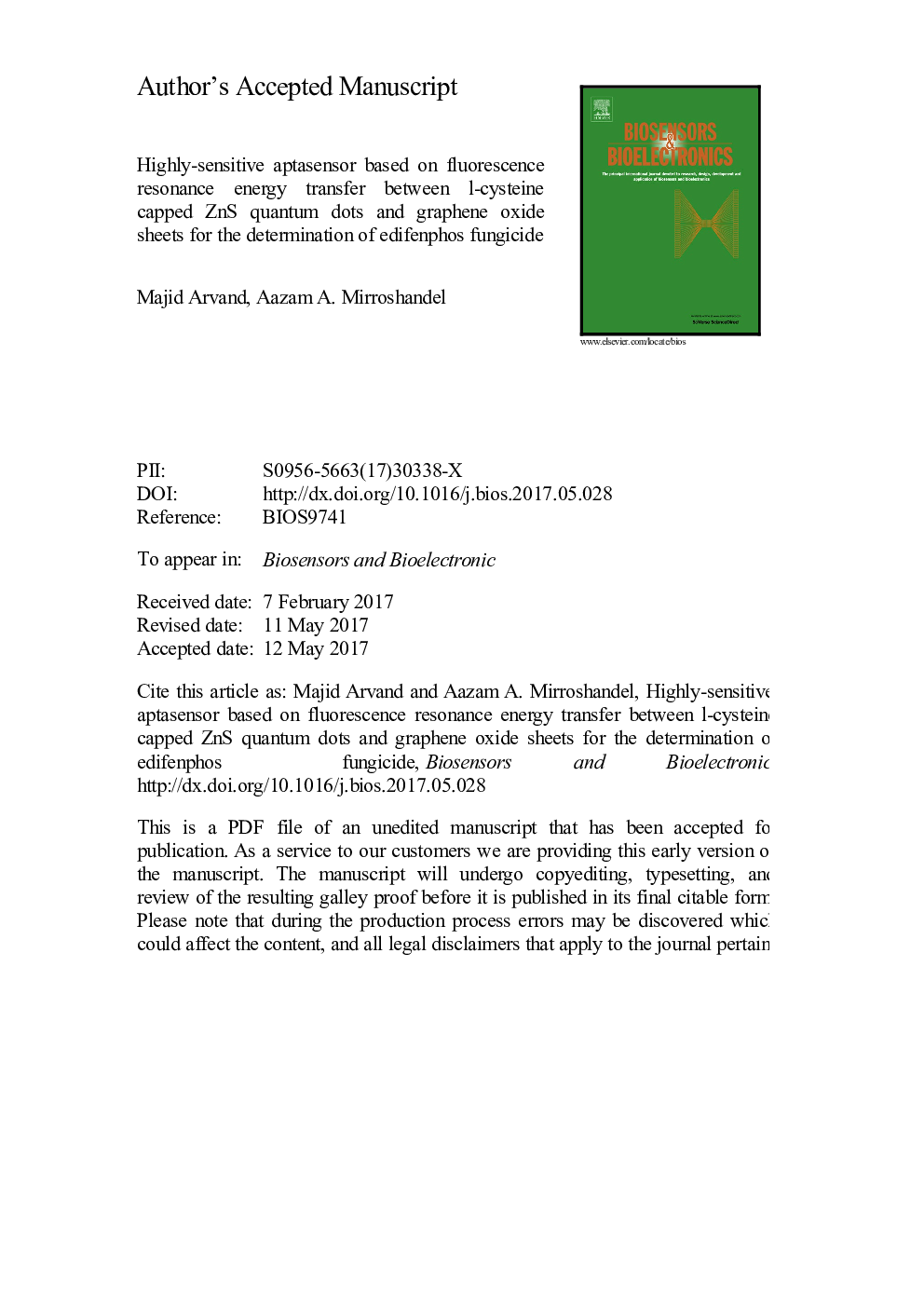| Article ID | Journal | Published Year | Pages | File Type |
|---|---|---|---|---|
| 5030872 | Biosensors and Bioelectronics | 2017 | 25 Pages |
Abstract
With the advantages of excellent optical properties and biocompatibility, single-strand DNA-functionalized quantum dots have been widely applied in biosensing and bioimaging. A new aptasensor with easy operation, high sensitivity, and high selectivity was developed by immobilizing the aptamer on water soluble l-cysteine capped ZnS quantum dots (QDs). Graphene oxide (GO) sheets are mixed with the aptamer-QDs. Consequently, the aptamer-conjugated QDs bind to the GO sheets to form a GO/aptamer-QDs ensemble. This aptasensor enables the energy transfer based on a fluorescence resonance energy transfer (FRET) from the QDs to the GO sheets, quenching the fluorescence of QDs. The GO/aptamer-QDs ensemble assay acts as a “turn-on'' fluorescent sensor for edifenphos (EDI) detection. When GO was replaced by EDI, the fluorescence of QDs was restored and its intensity was proportional to the EDI concentration. This GO-based aptasensor under the optimum conditions exhibited excellent analytical performance for EDI determination, ranging from 5Ã10â4 to 6Ã10â3 mg Lâ1 with the detection limit of 1.3Ã10â4 mg Lâ1. Furthermore, the designed aptasensor exhibited excellent selectivity toward EDI compared to other pesticides and herbicides with similar structures such as diazinon, heptachlor, endrin, dieldrin, butachlor and chlordane. Good reproducibility and precision (RSD =3.9%, n =10) of the assay indicates the high potential of the aptasensor for quantitative trace analysis of EDI. Moreover, the results demonstrate the applicability of the aptasensor for monitoring EDI fungicide in spiked real samples.
Related Topics
Physical Sciences and Engineering
Chemistry
Analytical Chemistry
Authors
Majid Arvand, Aazam A. Mirroshandel,
